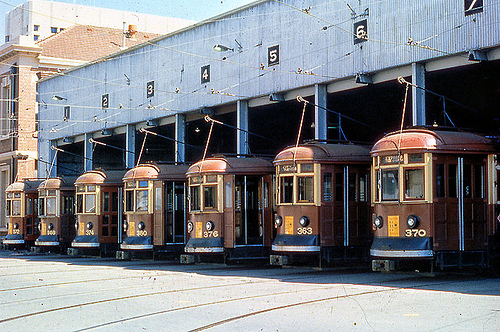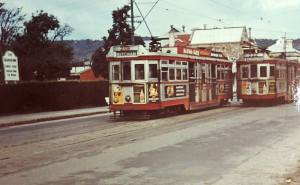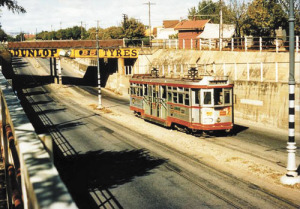ON March 12, 1954, the general manager of the Municipal Tramway Trust, Mr J.M. Keynes, released details of the new buses that were being introduced to replace trams in Adelaide.
He added that the steps the MTT was taking to replace trams with fuel buses would “immeasurably improve the city’s transport service”. I’m reminded of the guy who said “Computers? They’ll never catch on”.
Trams first appeared in Adelaide in the 1870s and by 1900 there were eight privately owned horse tram companies providing a public transport system running on 74 miles (120km) of track serving the city’s population of 162,000 people.
Late in 1906, the South Australian Parliament created the Municipal Tramways Trust, an entirely new organisation and gave it the brief to establish and run an electric tramway system within 10 miles (16km) of the GPO. At its peak in 1945 the tram system carried 95 million passengers and despite wartime shortages of parts and personnel the MTT kept 97 per cent of its rolling stock available.
By 1951, however, patronage had declined to 78 million, mainly through the effect of the abolition of wartime petrol rationing and the rising ownership of the family car. The early pride at the beginning of the system turned into panic in the 1950s when local councils were reminded that the legislation required councils themselves to cover operational losses. It was, after all, the Municipal Tramways Trust.
In 1951-52 the MTT lost £313,320 and made the decision to convert the Erindale, Burnside and Linden Park lines to electric trolley buses. The last trams on these lines ran on May 24, 1952, with the lines lifted from April 18, 1953. A 1953 royal commission was held to inquire into the financial affairs of the MTT resulting in a completely reconstituted board. The commission in its report was critical of the Trust for failing to plan for the future and recommended that no new tramways should be built and the operation of the Trust be examined by an independent transport expert and that the municipality-based trust be taken over by a governmentappointed board
Later the same year, with driver safety concerns about the conflict with increasing traffic on the road, the Glen Osmond line was temporarily converted to motor buses. The line was never converted back to trams and much comment was made about the continuing maintenance of unused overhead lines.
Trams were the lifeblood of the Adelaide transport system until the mid to late 1950s but the writing was on the wall. The new board made its recommendations to Parliament and drew up a 10 year plan to replace the entire tramway system, including the Glenelg line with diesel buses.
Fortunately for Adelaide the Glenelg tramline escaped the recommended closure because of its continuing effectiveness, the fact that it actually made a profit each year and the proposed cost of replacing it with a road.
It also became something of a tourist attraction and was allowed to remain as a remnant of the light rail network that served Adelaide so well for 49 years. Its survival also eventually stirred an interest in the revival of a tramway system which now stretches from Victoria Square to the Entertainment Centre on Port Rd with more tracks promised.




What a shame they didn’t keep all the tramways. Cities that did like Melbourne have retained a lot of the suburb centres because of this.
They are much better to travel on too compared to buses that now have to fight with all the other traffic.
What a pity the liberals got back in gov.opting to not progress the new trams beyond the city
He we go all progress for what when trams made Adelaide a great transport hub to get around like Melbourne no pollution just great conviience our forebears built the ultimate transportation system and we ended up building the crap buses service like the oban when it should be a tram service like the old days that’s why i love Melbourne so much its just has that nostalgia of tram service and quickly getting from the suburbs to the city
The stronger routes should have been kept and extended in some cases – Cheltenham, Prospect, Enfield, Payneham/Paradise, Magill/Morialta, Kens Gdns, Fullarton/Springfield, Mitcham, Col Light Gdns, Richmond, Henley. Walkerville Nth had great potential for serving Northfield and Gilles Plains/Modbury.
The decision to convert all lines to buses was shortsighted. The standard of public transport services has spiralled downwards ever since the 1950’s.